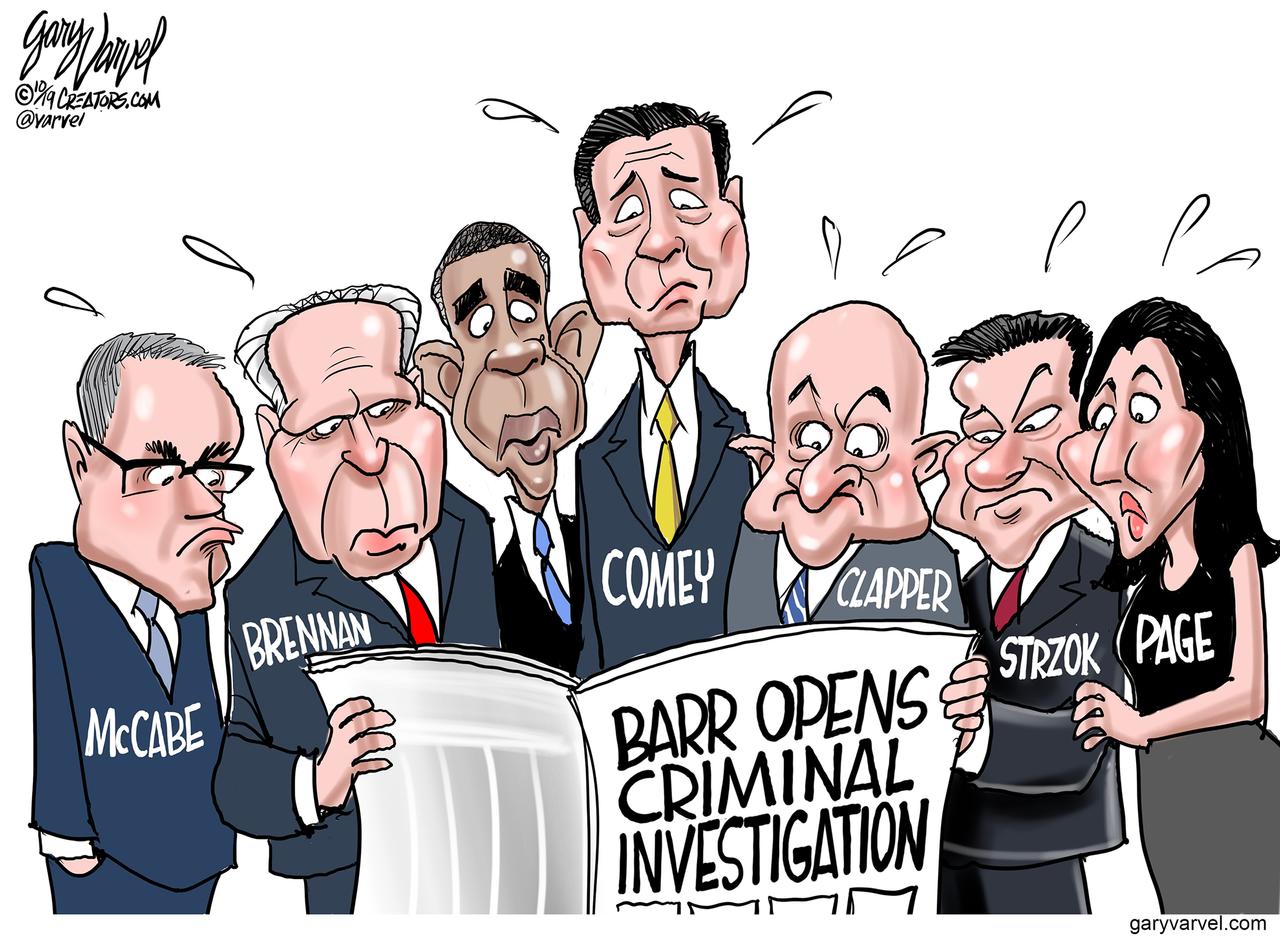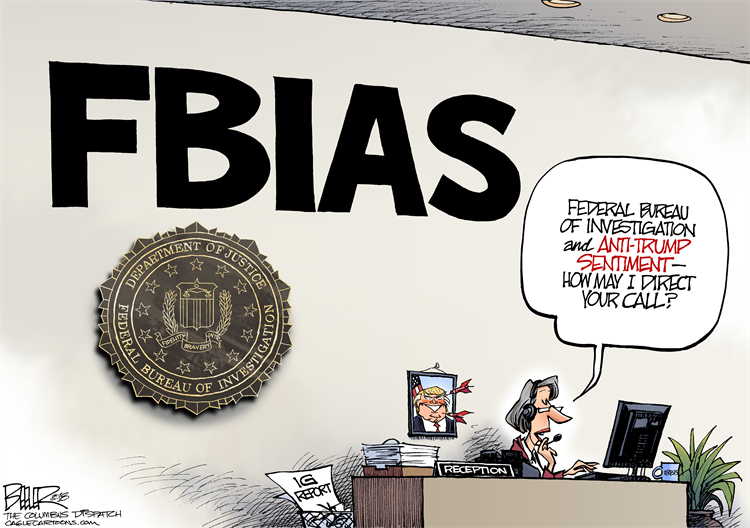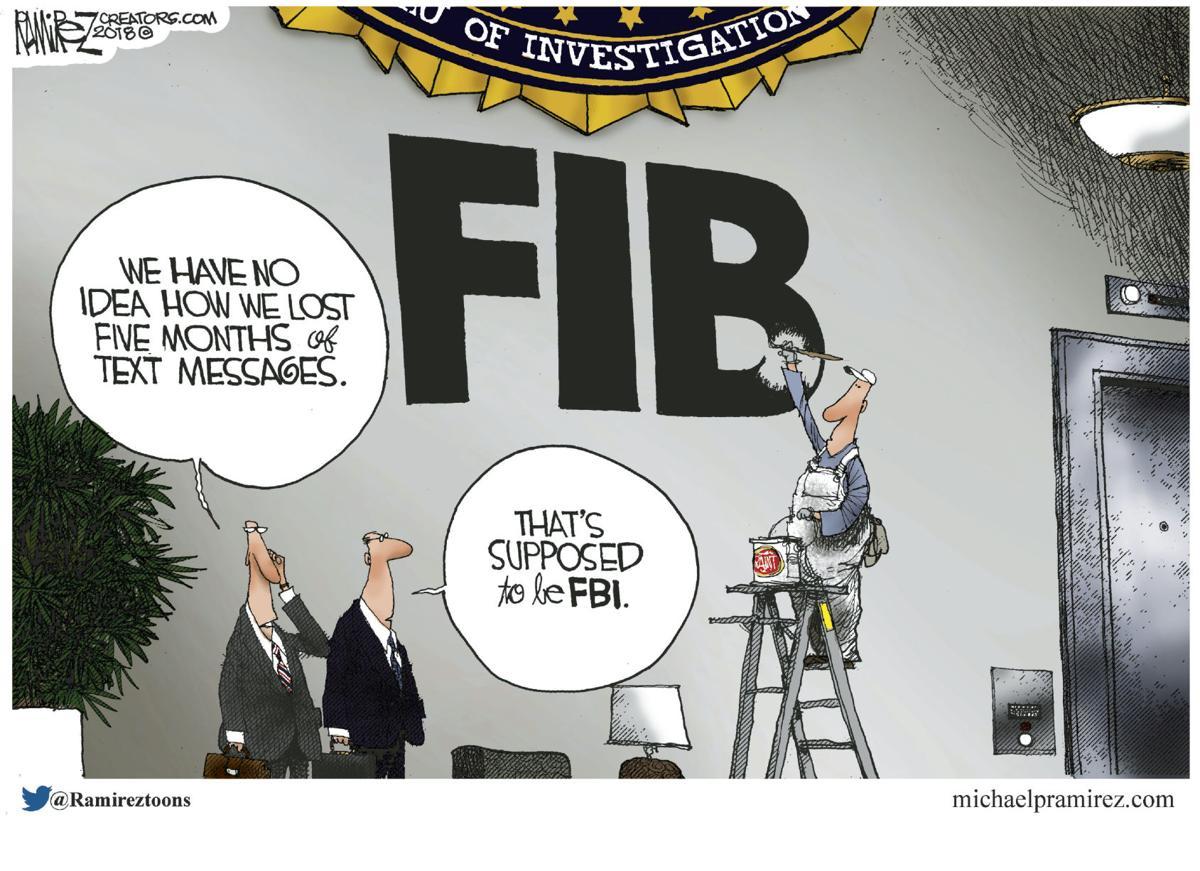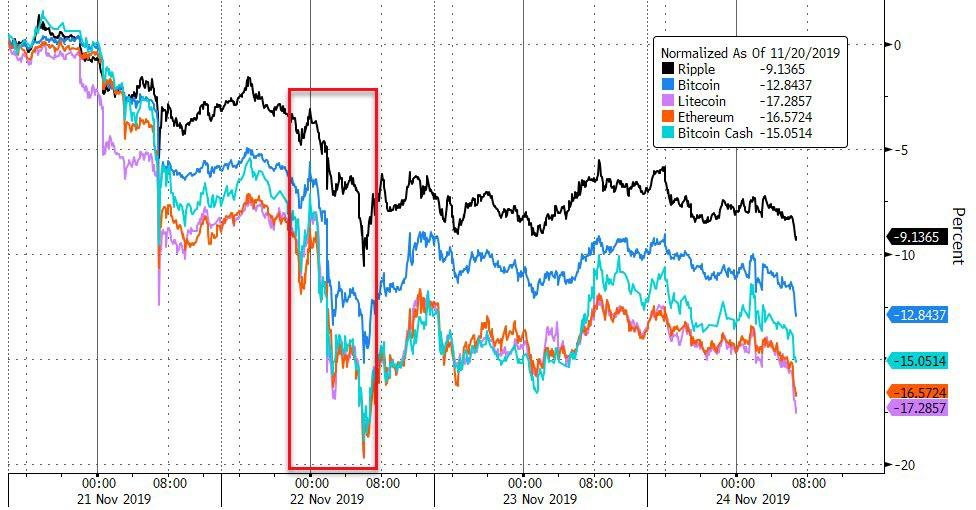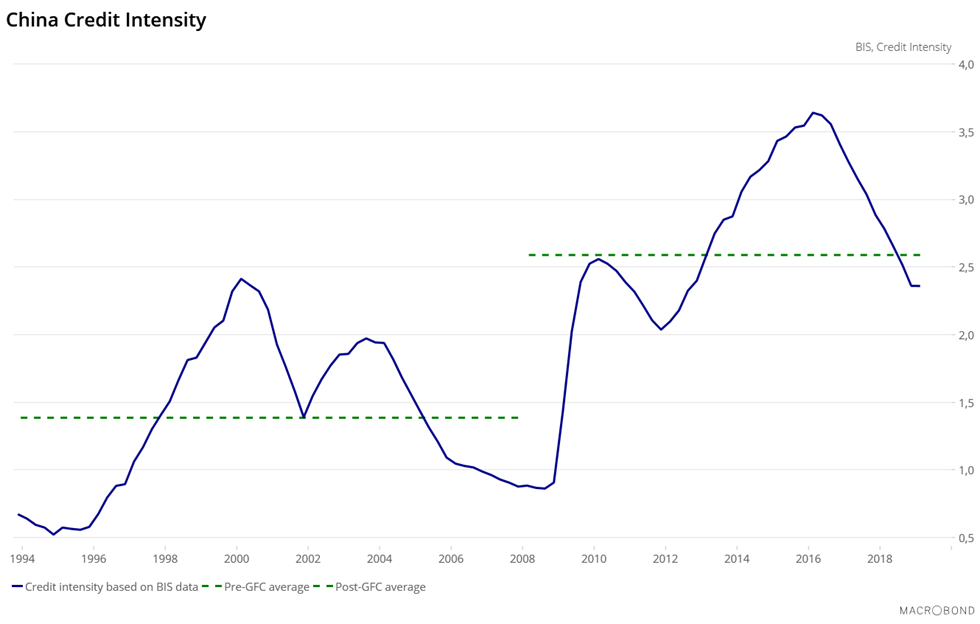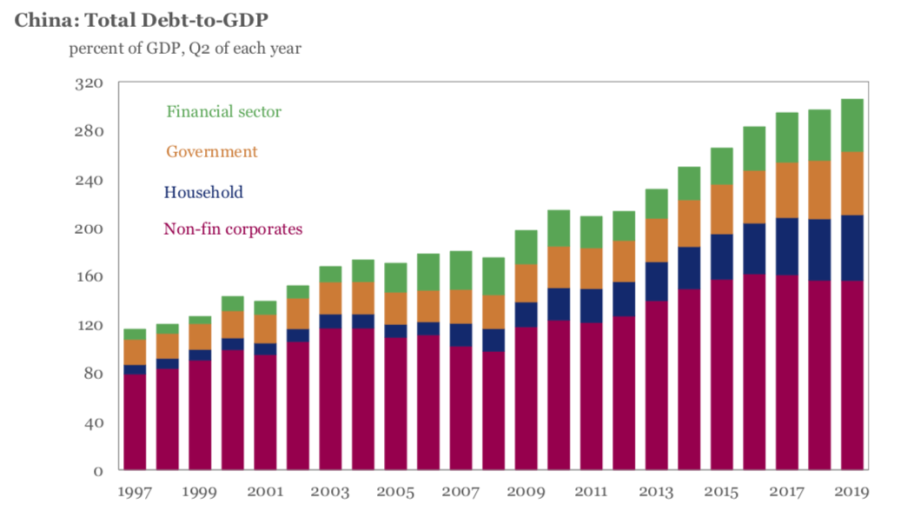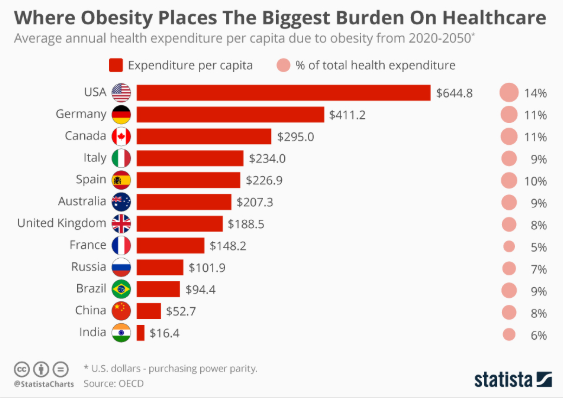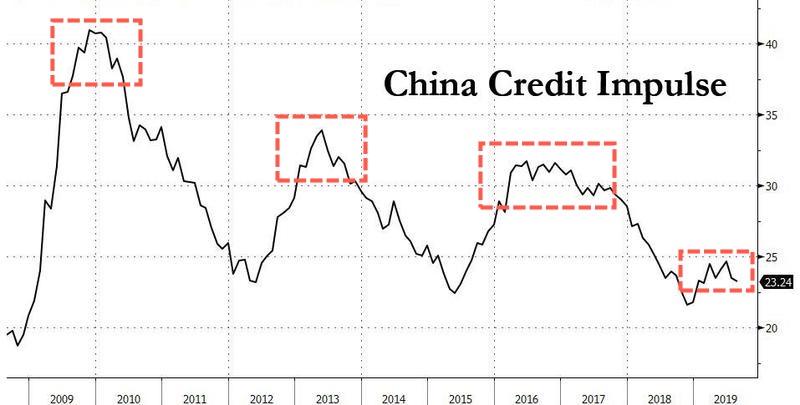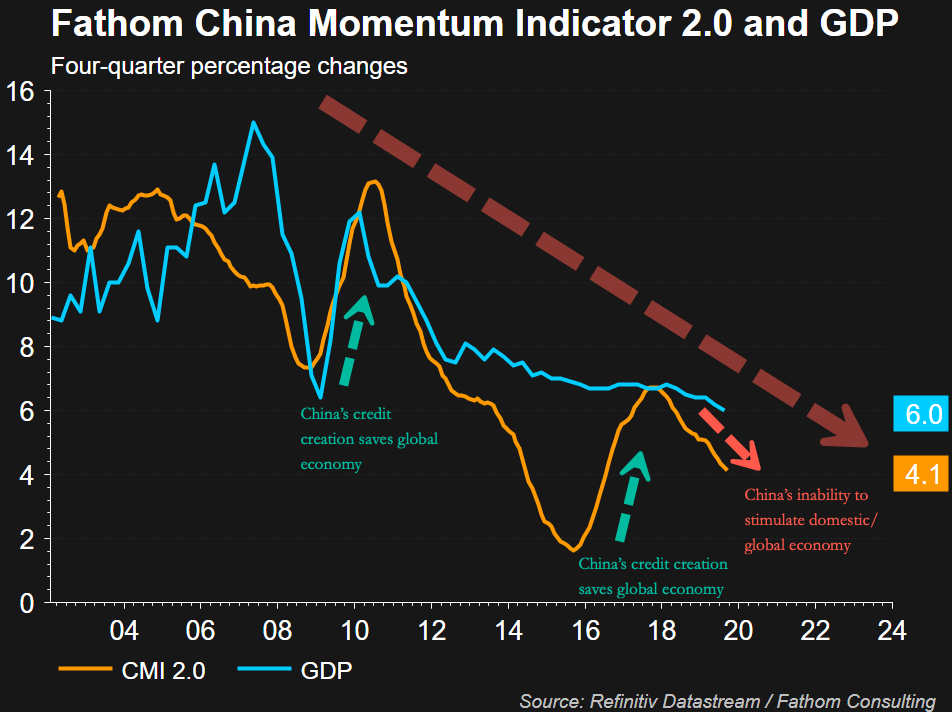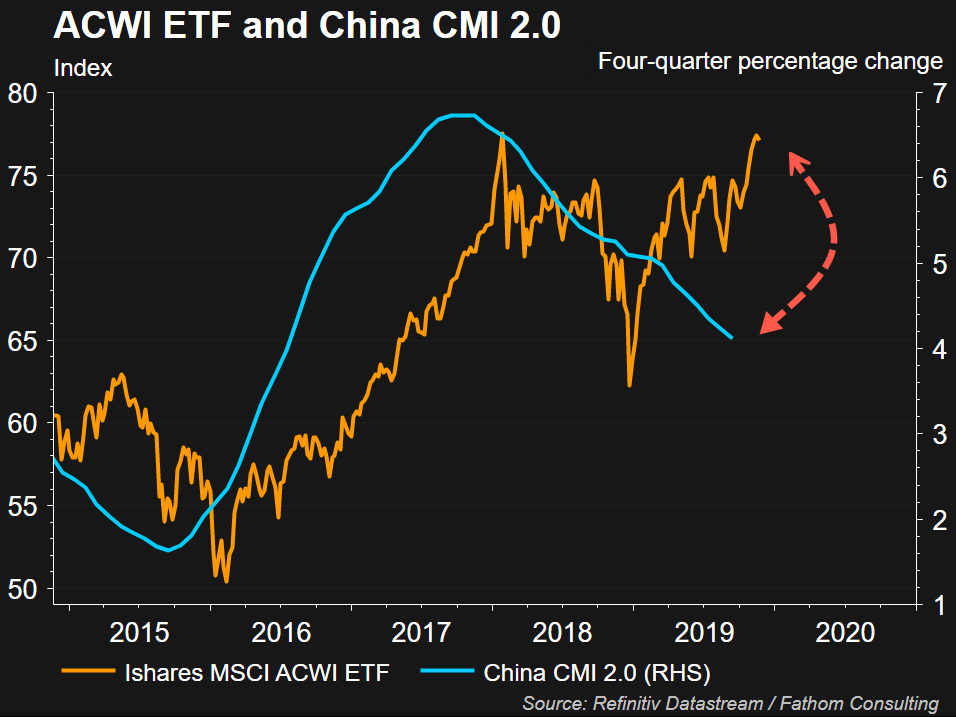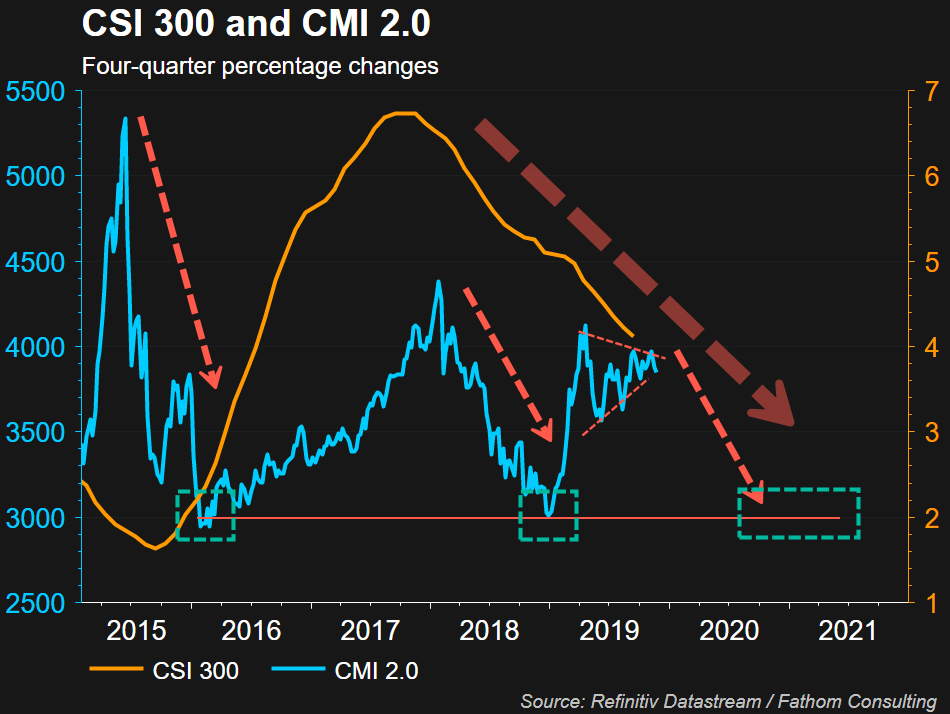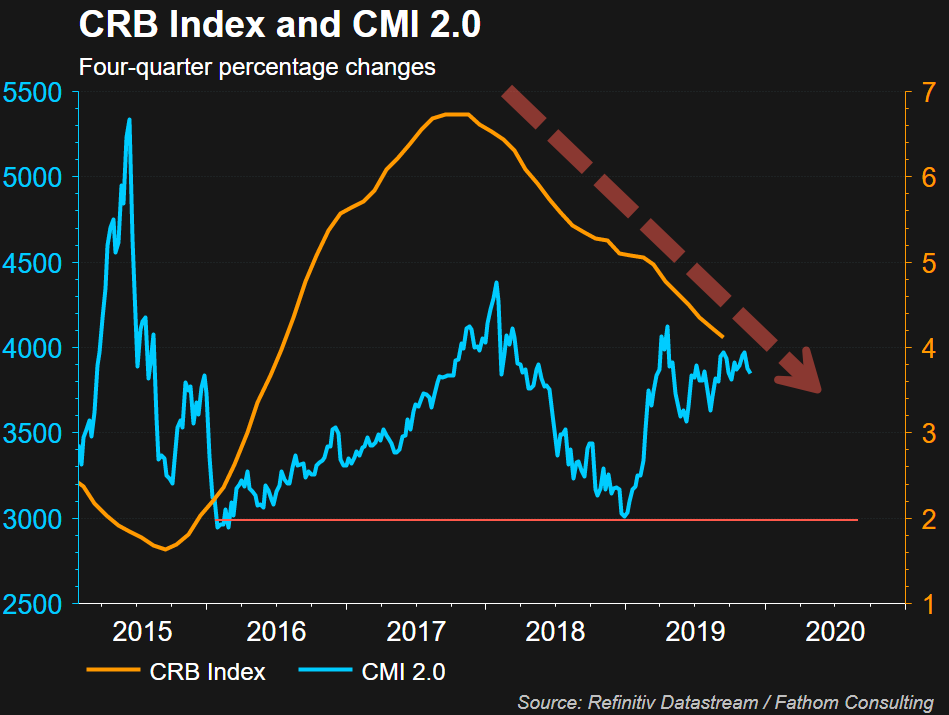Here Is What The Horowitz Report Should Conclude
Authored by Larry Johnson via Sic Semper Tyrannis blog,
You do not have to wait for the Horowitz report. I can give you a preview of what he should have found if he conducted an honest audit.
The following is not my opinion. It is based on the flood of information that has come out over the past two and a half-years surrounding the plot to destroy the Presidency of Donald Trump. When you read these facts it is easy to understand how dishonest and corrupt the FBI were in presenting a FISA application to spy on Carter Page. Helen Keller could see this is wrong.
Let me take you through this piece-by-piece (except where noted I am quoting from the first FISA application).
Let’s start with the FBI claim that Carter Page was an “agent of a foreign government.”
The target of this application is Carter Page, a U.S. person, and an agent of a foreign power, described in detail below. The status of the target was determined in or about October 2016 from information provided by the U.S. Department of State.
What information did State supply? Information provided by the notorious Christopher Steele. The Washington Examiner’s Daniel Chaitin reported on this in May 2019:
Steele met Deputy Assistant Secretary of State Kathleen Kavalec on Oct. 11, 2016, 10 days before the first warrant application was submitted, and admitted he was encouraged by a client, the Clinton campaign and the Democratic National Committee, to get his research out before the 2016 election on Nov. 8, signaling a possible political motivation. The meeting was described in notes taken by Kavalec that were obtained by conservative group Citizens United through open-records litigation. The notes show that Kavalec believed at least some of Steele’s allegations to be false.
Government officials told the Hill that Kavalec informed FBI Special Agent Stephen Laycock about the meeting in an email eight days before the FISA warrant application was filed. Laycock, then the FBI’s section chief for Eurasian counterintelligence, quickly forwarded what he learned to Peter Strzok, the special agent who was leading the Trump-Russia investigation.
There it is. Not an assumption. A fact. State passed a false report from Christopher Steele to the FBI and the FBI ran with it. A competent FBI Agent would have asked about the identity of the source of the information. Either the FBI failed to do this or it lied in the FISA application. The FBI had a responsibility to note that Steele was the sole source for the claim that Page was an “agent of a foreign power.”
The application reiterates its basis for this assertion:
This application targets Carter Page. The FBI believes Page has been the subject of targeted recruitment by the Russian Government to undermine and influence the outcome of the 2016 U.S. Presidential election in violation of U.S. criminal law.
This is based on the false report from Christopher Steele as well as “cooked” intelligence provided by CIA Director Brennan. Brennan was passing off a low level Russian bureaucrat as a high level source with direct access to Putin. That was a lie.
The application then tries to bolster the lie by attributing the FBI’s credulity by citing the U.S. intelligence community (an ironic oxymoron).
In addition, according to an October 7, 2016 Joint Statement from the Department of Homeland Security and the Office of the Director of National Intelligence on Election Security (Election Security Joint Statement), the USIC is confident that the Russian Government directed the recent compromises of e-mails from U.S. persons and institutions, including from U.S. political organizations. The Election Security Joint Statement states that the recent disclosures of e-mails on; among others, sites like WikiLeaks are consistent with the methods and motivations of Russian-directed efforts. According to the Election Security Joint Statement, these thefts and disclosures are intended to interfere with the U.S. election process; activity that is not new to Moscow – the Russians have used similar tactics and techniques across Europe and Eurasia, for example, to influence public opinion there. The Election Security Joint Statement states that, based on the scope and sensitivity of these efforts, only Russia’s senior-most officials could have authorized these activities.
This was a lie. The US Intelligence Community aka USIC had made no such formal determination. If they had there would have been a written document. There was no written document and no evidence that “all 17 intelligence agencies” had coordinated and approved such a document. The Intelligence Community Assessment would not be published until January 2017 and only the FBI, the CIA and the NSA signed off on that piece of fantasy.
After stating that Carter was a Trump foreign policy advisor the FBI insists in the application:
The FBI believes that the Russian Government’s efforts are being coordinated with Page and perhaps other individuals associated with Candidate #l’s campaign (i.e. Trump).
That belief was based on the bogus information passed to State Department by Christopher Steele. It was a lie. They had no evidence and, more importantly, obtained no validation as a result of spying authorized by this outrageous application.
The FBI continues with this charade by outlining Page’s previous cooperation in helping gather evidence that led to the indictment of two Russian intel officers in January 2015. Worth noting that Bill Priestrap, who was now running FBI’s Counter Intelligence operations from FBI Headquarters, was the supervising agent in that operation and knew all about the role Page played in helping get the Russians. But the FBI put this into the application merely to foster the perception that Carter had an in with the Russians.
The FBI then disingenuously introduces Christopher Steele (i.e., Confidential Human Source #1) as the source for evidence about Page’s supposedly nefarious activities:
According to open source information, in July 2016, Page traveled to Russia and delivered the commencement address at the New Economic School.7 In addition to giving this address, the FBI has learned that Page met with at least two Russian officials during this trip. First, according to information provided by an FBI confidential-human source (Source #1), reported that Page had a secret meeting with Igor Sechin, who is the President of Rosneft [a Russian energy company] and a close associate to Russian President Putin. [Steele] reported that, during the meeting, Page and Sechin discussed future bilateral energy cooperation and the prospects for an associated move to lift Ukraine-related Western sanctions against Russia.
This was a lie designed to bamboozle the FISA court Judge. When you look at the footnote for Christopher Steele, we catch the FBI in another monster lie:
and the FBI is unaware of any derogatory information pertaining to Source #1.
The FBI fired Steele as a compensated human source within days of this FISA application. Getting fired for leaking information to the press without the approval of the FBI is “DEROGATORY INFORMATION. Why did the FBI lie on this critical detail? Let us hope Horowitz addresses this.
The footnote related to Steele also contains this disingenuous whopper:
Source #1, who now owns a foreign business/financial intelligence firm, was approached by an identified U.S. person, who indicated to Source #1 that a U.S.-based law firm had hired the identified U.S. person to conduct research regarding Candidate #l’s ties to Russia (the identified U.S. person and Source #1 have a long-standing business relationship). The identified U.S. person hired Source #1 to conduct this research. The identified U.S. person never advised Source #1 as to the motivation behind the research into Candidate #l’s ties to Russia. The FBI speculates that the identified U.S. person was likely looking for information that could be used to discredit Candidate #1’s campaign.
The FBI knew that Glenn Simpson was working for Hillary Clinton. They failed to mention this. Instead, the FBI opted for the white lie of pretending that Steele, under Simpson’s guidance, was just doing opposition research. The FBI can pretend they were just incompetent, but we now know that they were fully aware of Simpson’s ties to the Clinton effort using the law firm as a cut-out.
The FBI continued feed out the lies of the Steele Dossier pretending they were verified facts:
Divyekin [who is assessed to be Igor Nikolayevich Divyekin] had met secretly with Page and that their agenda for the meeting included Divyekin raising a dossier or “kompromat” that the Kremlin possessed on Candidate #2 [i.e., Clinton] and the possibility of it being released to Candidate #l’s campaign.
This is an unverified claim. Regular Americans know it simple as another damn lie.
Then the FBI turns its attention to creating the propaganda meme that Donald Trump had cut a deal with Putin to lift all sanctions and hurt Ukraine. This is breathtaking in light of what we now know about real Ukrainian efforts to hurt Trump:
July 2016 article in an identified news organization reported that Candidate #1’s campaign worked behind the scenes to make sure Political Party #1’s platform would not call for giving weapons to Ukraine to fight Russian and rebel forces, contradicting the view of almost all Political Party #l’s foreign policy leaders in Washington. The article stated that Candidate #l’s campaign sought “to make sure that [Political Party #1] would ot pledge to give Ukraine the weapons it has been asking for from the United States.” Further, an August 2016 article published by an identified news organization characterized Candidate #1 as sounding like a supporter of Ukraine’s territorial integrity in September (2015], adopted a “milder” tone regarding Russia’s annexation of Crimea. The August 2016 article further reported that Candidate #1 said Candidate #1 might recognize Crimea as Russian territory and lift punitive U.S. sanctions against Russia. The article opined that while the reason for Candidate #l’s shift was not clear, Candidate #l’s more conciliatory words, which contradict Political Party #1’s official platform, follow Candidate #l’s recent association with several people sympathetic to Russian influence in Ukraine, including foreign policy advisor Carter Page.
This was false information (i.e., A LIE) being fed to a pliant media by Clinton campaign officials and supporters. And the FBI buys it hook line and sinker.
The FBI then brings Michael Isikoff into the act, who also is passing along information obtained from Christopher Steele. This is nothing but chutzpah by the Bureau. Shameful:
About September 23, 2016, an identified news organization published an article (September 23rd News Article), which was written by the news organization’s Chief Investigative Correspondent, alleging that U.S. intelligence officials are investigating Page with respect to suspected efforts by the Russian Government to influence the U.S. Presidential election.· According to the September 23rd News Article, U.S. officials received intelligence reports that when Page was in Moscow in July 2016 to deliver the above-noted commencement address at the New Economic School, he met with two senior Russian officials. The September 23rd News Article stated that a “well-placed Western intelligence source” told the news organization that Page met with Igor Sechin, a longtime Putin associate and former Russian deputy minister who is now the executive chairman of Rosneft. At their alleged meeting, Sechin raised the issue of the lifting of sanctions with Page.
According to the September 23rd News Article, the Western intellig nce source also reported that U.S. intelligence agencies received reports that Page met with another top Putin aide – Igor Divyekm,, a former Russian security official who now serves as deputy chief for internal policy and is believed by U.S. officials to have responsibility for intelligence collected by Russian agencies about the U.S. election.
The FBI is pretending that this is another source to corroborate Steele. It is not. It is Christopher Steele talking to Isikoff.
The FBI at least made the pretense of giving Carter Page a chance to deny the allegations and he did in the strongest terms possible:
On or about September 25, 2016, Page sent a letter to the FBI Director. In this letter, Page made reference to the accusations in the September 23rd News Article and denied them. Page stated thatthe source of the accusations is nothing more than completely false media reports and that he did not meet this year with any sanctioned official in Russia. Page also stated that he would be willing to discuss any “final” questions the FBI may have.
The rest of the application is blacked out and presumably contains the FBI’s explanation of why they believed Carter Page was lying. But it was the FBI who was lying. If those blacked out portions are declassified then we will almost certainly see that the FBI was claiming it had multiple sources contradicting Page when in fact, it only had one–Christopher Steele, a retired British intelligence officer.
I draw this conclusion based on the FBI’s stated conclusion in the application:
(U) As discussed above, the FBI believes that Page has been collaborating and conspiring with the Russian Government . . .Based on the foregoing facts and circumstances the FBI submits that there is probable cause to believe that Page [and others whose names are blacked out, probably Michael Flynn] knowingly engage in clandestine intelligence activities (other than intelligence gathering activities) for or on behalf of such foreign power, or knowingly conspires with other persons to engage in such activities and, therefore, is an agent of a foreign power as defined by 50 U.S.C. § 1801(b)(2)(E).
The American people must wake up and understand how dishonest and stupid the FBI was in writing and submitting this baseless application to the FISA court. And we are not talking about low level flunkies who changed an email. Jim Comey signed off on these lies. Andrew McCabe signed off on this lies.
I will reiterate, if Inspector General Horowitz fails to highlight these clear and pervasive lies then it will be up to Attorney General Barr and Prosecutor John Durham to set things right.
Tyler Durden
Sun, 11/24/2019 – 23:30
via ZeroHedge News https://ift.tt/34jGdS7 Tyler Durden
